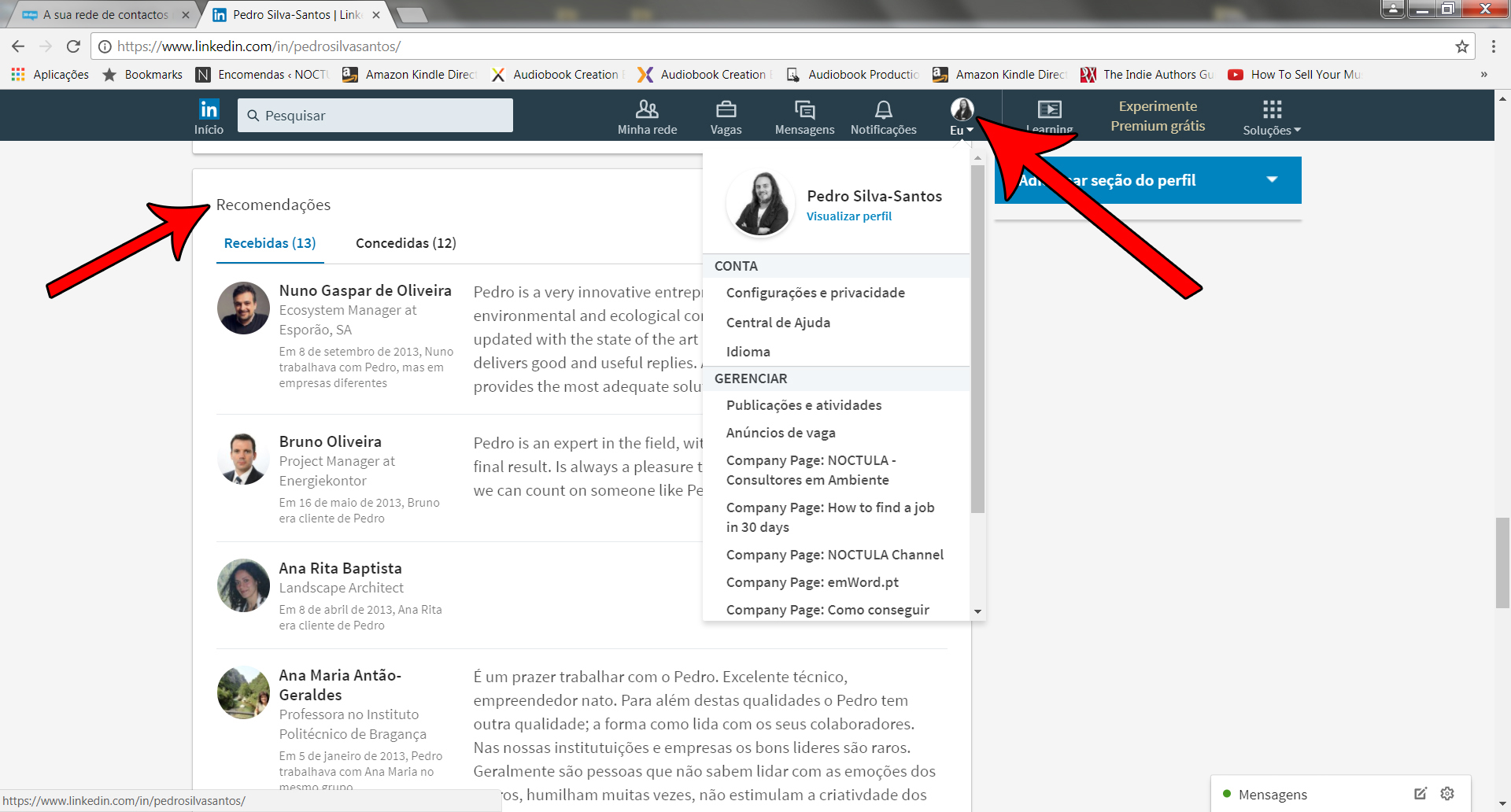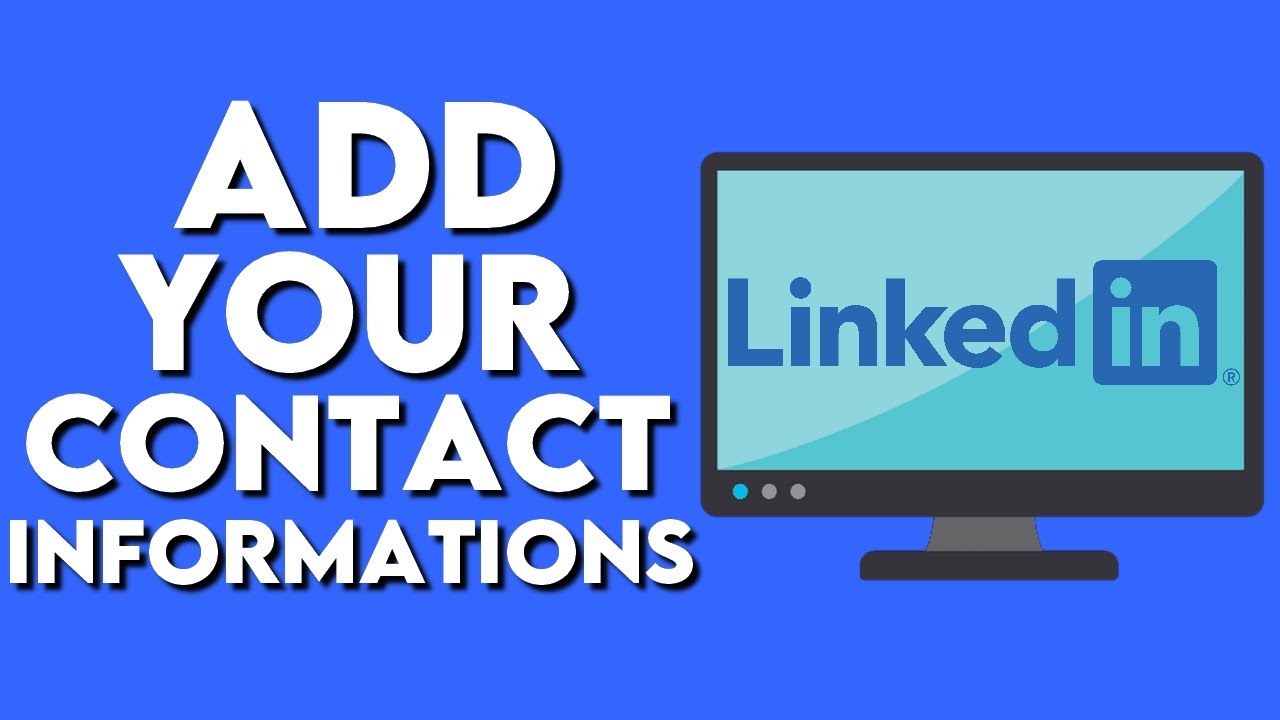Are you ready to take your professional networking to the next level? Adding contacts on LinkedIn is a fantastic way to connect with industry leaders, potential partners, and even future employers. In this blog post, we’ll explore the ins and outs of expanding your LinkedIn network, making it easier for you to tap into opportunities and insights that can propel your career forward. Let’s dive in!
Why Expanding Your Network on LinkedIn is Important

Expanding your network on LinkedIn is more than just collecting connections; it's about cultivating relationships that can open doors to new opportunities. Here are some compelling reasons why you should actively grow your LinkedIn network:
- Access to Opportunities: A larger network means more visibility. Job openings and projects often circulate within personal connections before reaching broader audiences. By connecting with diverse professionals, you're more likely to hear about these opportunities first.
- Industry Insights: Engaging with a wider range of contacts provides you with valuable insights into industry trends, challenges, and innovations. Sharing and receiving knowledge can help you stay ahead in your field.
- Collaborative Potential: Building a robust network fosters collaboration. Whether you're looking for a mentor, a business partner, or simply someone to brainstorm ideas with, having a diverse network increases your chances of finding the right match.
- Professional Branding: Every new connection can enhance your professional brand. The more people recognize your name and expertise, the more likely you are to be remembered when opportunities arise.
- Support System: Your network can serve as a valuable support system. Whether you need advice, encouragement, or feedback, connecting with others allows you to tap into a wealth of experiences and perspectives.
By thoughtfully expanding your network on LinkedIn, you’re not just adding numbers; you’re creating a community of professionals who can support and elevate each other. Consider this: each connection is a potential gateway to new knowledge, opportunities, and relationships that can help you thrive in your career.
So, how do you start expanding your network effectively? Stay tuned for practical tips in the upcoming sections!
Also Read This: How to Add Employees to Your LinkedIn Company Page
3. Step-by-Step Guide to Adding Contacts on LinkedIn

Ready to boost your LinkedIn network? Adding contacts is straightforward, and I’m here to guide you through each step! Let’s dive into how you can connect with professionals and expand your network effectively.
Step 1: Log into Your LinkedIn Account
First things first, head over to LinkedIn and log into your account. If you don’t have one yet, you’ll need to create an account. It’s free and takes just a few minutes!
Step 2: Use the Search Bar
Once you’re in, look for the search bar at the top of the page. This is your gateway to finding people. You can search for individuals by name, or if you have a specific job title or company in mind, enter that as well.
Step 3: Find Your Desired Contact
When you type in a name or title, you’ll see a list of profiles. Click on the one you want to connect with. Be sure to check their profile to see if they’re the right fit for your network.
Step 4: Click “Connect”
Once you’re on the profile of the person you want to add, look for the Connect button, usually located near their profile picture. Click it, and a pop-up will appear.
Step 5: Personalize Your Invitation
It’s always a good idea to personalize your connection request. Instead of sending the default message, take a moment to explain why you want to connect. For example:
- Shared Interests: “Hi [Name], I noticed we have mutual interests in digital marketing. I’d love to connect and share insights!”
- Professional Background: “Hi [Name], I see you’re working at [Company]. I admire your work and would love to connect!”
Step 6: Send the Invitation
After personalizing your message, click Send Invitation. Your request is now on its way! If they accept, you’ll be connected and can start engaging.
Bonus Tip: If you know someone in common, mention them! It adds credibility to your request and increases the likelihood of acceptance.
Also Read This: How to Remove Open to Work from LinkedIn: A Guide to Disabling the Feature
4. Best Practices for Networking on LinkedIn
Networking on LinkedIn is more than just adding contacts; it’s about building meaningful connections. Here are some best practices to keep in mind:
Be Authentic
People appreciate genuineness. When reaching out, be yourself! Share your true interests and goals. Authentic conversations lead to stronger connections.
Engage Regularly
Networking doesn’t end once you connect. Engage with your contacts by liking, commenting, or sharing their posts. This keeps you on their radar and helps develop your professional relationship.
Join Relevant Groups
LinkedIn groups are a goldmine for networking. Join groups related to your industry or interests and participate in discussions. It’s a fantastic way to meet new people and share knowledge.
Share Valuable Content
Showcase your expertise by sharing content that adds value to your network. Whether it’s articles, blogs, or your thoughts on industry trends, sharing helps you stay relevant and attracts connections.
Follow Up
After connecting, don’t hesitate to follow up with a message. You could say something like:
- “Thanks for connecting, [Name]! I look forward to sharing insights with you.”
- “Hi [Name], I found your post on [topic] fascinating. Would love to discuss it further!”
Be Patient
Networking is a marathon, not a sprint. Building relationships takes time, so don’t rush it. Nurture your connections, and they’ll grow stronger over time.
By following these steps and best practices, you’ll not only add contacts to your LinkedIn network but also create valuable relationships that can benefit you throughout your career! Let’s get networking!
Also Read This: How to Sign in to LinkedIn as a Guest
5. Using LinkedIn Features to Enhance Your Connections
Once you've started adding contacts on LinkedIn, it's time to leverage some powerful features that can truly enhance your networking experience. LinkedIn isn’t just a platform to connect; it’s a treasure trove of tools designed to help you maintain and grow those connections.
1. LinkedIn Groups
Joining relevant LinkedIn Groups can be a game-changer. These groups are filled with like-minded professionals who share your interests or industry. Engaging in discussions within these groups not only helps you establish your presence but also opens the door to connect with group members. For instance, if you're in the marketing field, joining a group like "Digital Marketing Trends" can introduce you to industry leaders and potential mentors.
2. Endorsements and Recommendations
Don’t underestimate the power of endorsements and recommendations. When you endorse someone for their skills, they're likely to return the favor. Plus, receiving recommendations adds credibility to your profile and can significantly enhance your professional image. Consider reaching out to past colleagues or clients and asking them for a brief recommendation. It’s a great way to build rapport while enhancing your profile!
3. Personalized Connection Requests
Whenever you send a connection request, don’t just hit “connect.” Take a moment to add a personalized note. This small gesture can make a big difference. Mention how you know the person or why you’d like to connect. A simple, “Hi [Name], I enjoyed your recent post about [topic] and would love to connect and share insights,” can set the tone for a meaningful connection.
4. The 'People You May Know' Feature
This feature is like a goldmine for expanding your network. It suggests potential connections based on your current network, shared connections, and industries. Regularly checking this section can help you discover individuals you might have overlooked but who could be valuable contacts.
5. LinkedIn Events
Participating in LinkedIn Events is another fantastic way to meet new professionals. Whether they are webinars, workshops, or networking events, these gatherings allow you to engage with attendees and speakers. After the event, you can connect with them, referencing your shared experience to help spark a conversation.
6. Common Mistakes to Avoid When Adding Contacts
While connecting on LinkedIn can be straightforward, it’s easy to trip up and make some common mistakes that could hinder your networking efforts. Let’s explore a few of these pitfalls and how to avoid them.
1. Sending Generic Connection Requests
One of the biggest faux pas is sending out generic connection requests. A simple “I’d like to connect” can come off as impersonal. Always add a personalized note to your request to let the person know why you want to connect. This not only increases your chances of getting accepted but also sets a positive tone for future interactions.
2. Overconnecting
It’s tempting to connect with everyone you meet, but quality trumps quantity. Focus on building meaningful connections instead of adding random contacts. A cluttered network can make it difficult to engage meaningfully and can dilute your professional brand.
3. Neglecting Your Profile
Your profile is your online business card. If it’s incomplete or poorly crafted, potential contacts may think twice before connecting. Ensure your profile is up-to-date, includes a professional photo, and accurately reflects your skills and experiences.
4. Ignoring Connection Etiquette
Once you connect, don’t just leave it at that. Engage with your new connections by liking or commenting on their posts. This demonstrates that you value their content and helps cultivate a stronger relationship.
5. Failing to Follow Up
After connecting, it’s wise to follow up within a few days. A quick message thanking them for connecting and suggesting a chat or coffee can turn a simple link into a valuable relationship. It shows initiative and interest in building a rapport.
By avoiding these common pitfalls and utilizing LinkedIn’s features wisely, you can significantly enhance your networking experience and create a robust professional circle.
 admin
admin








